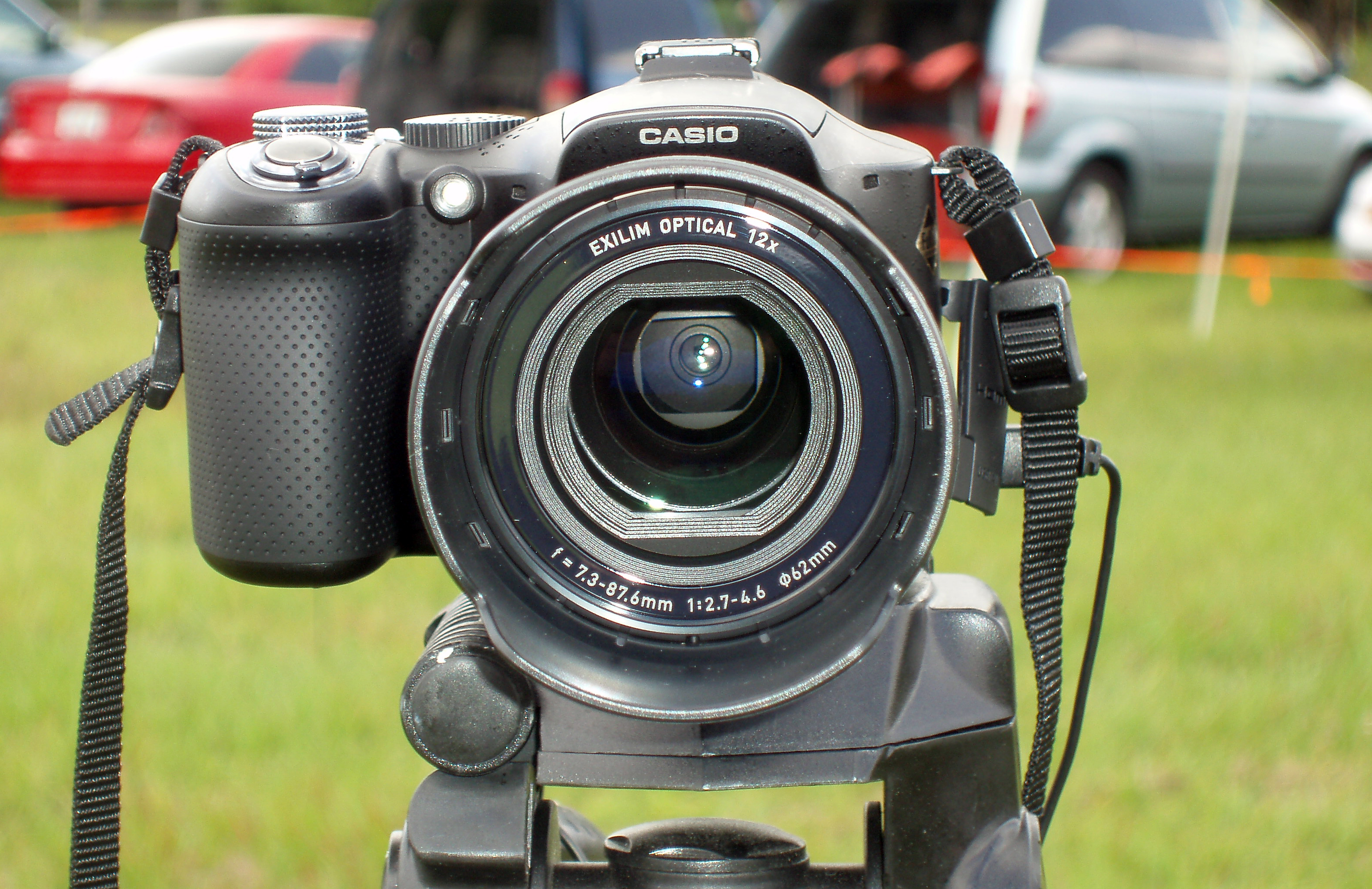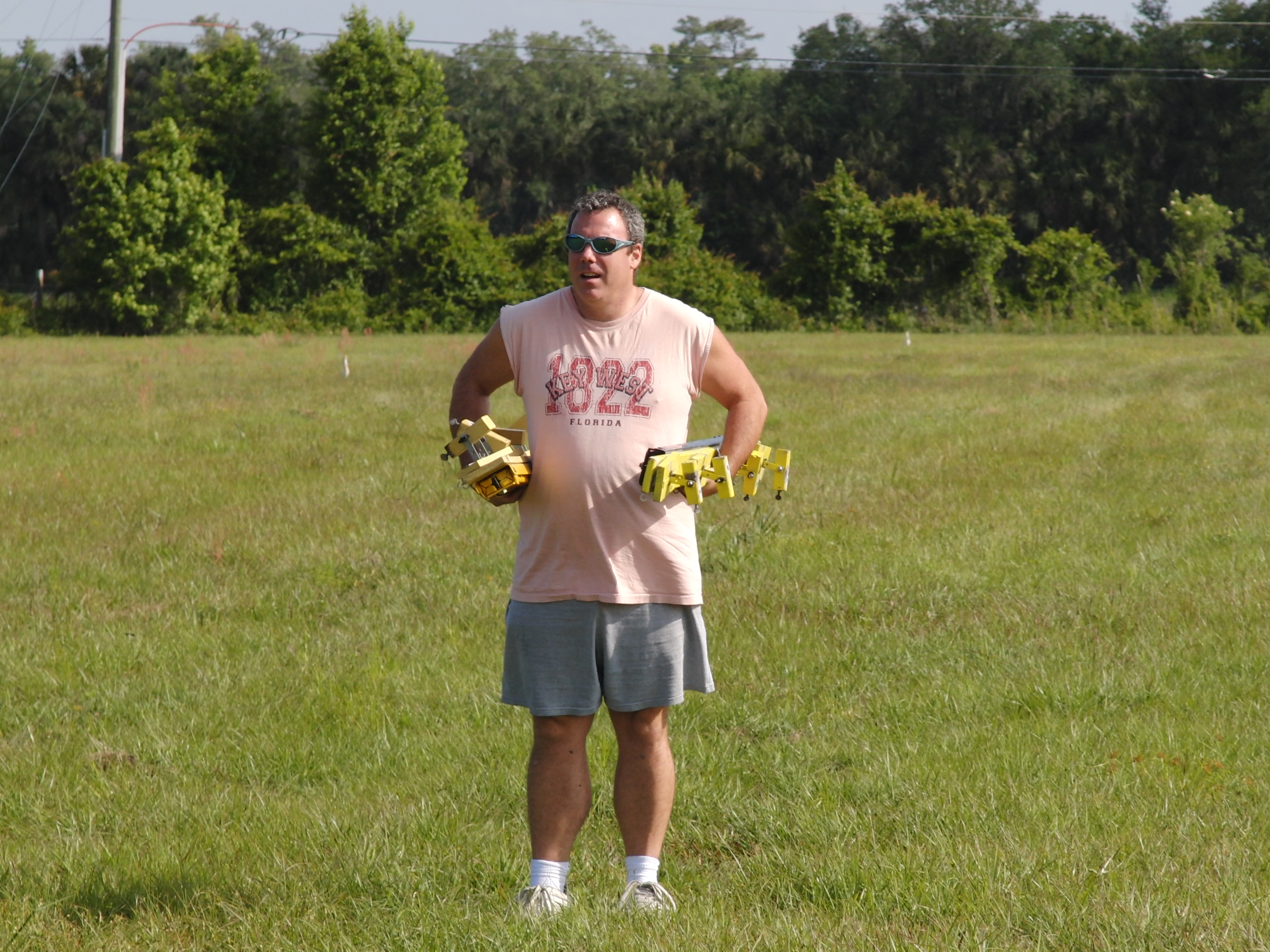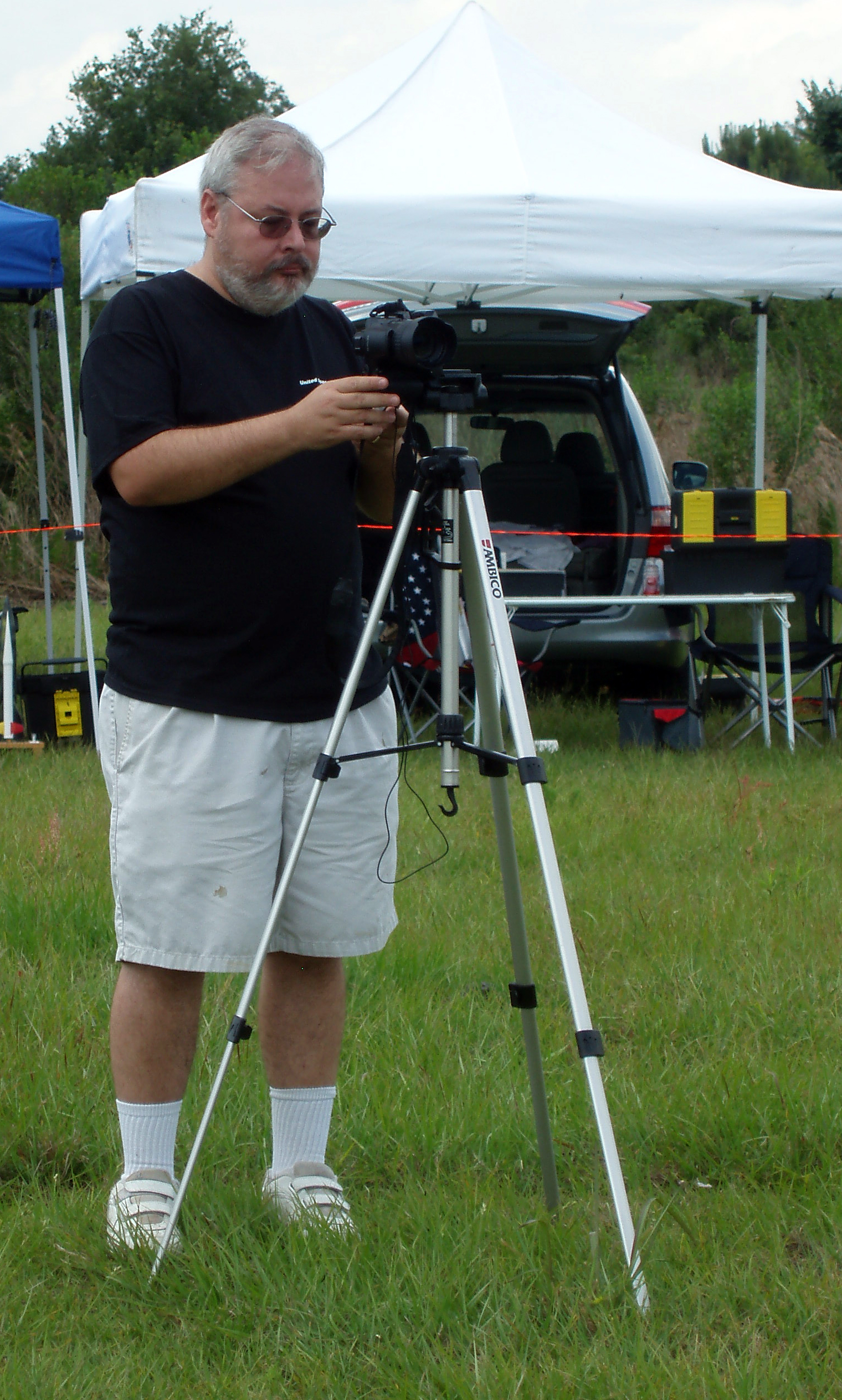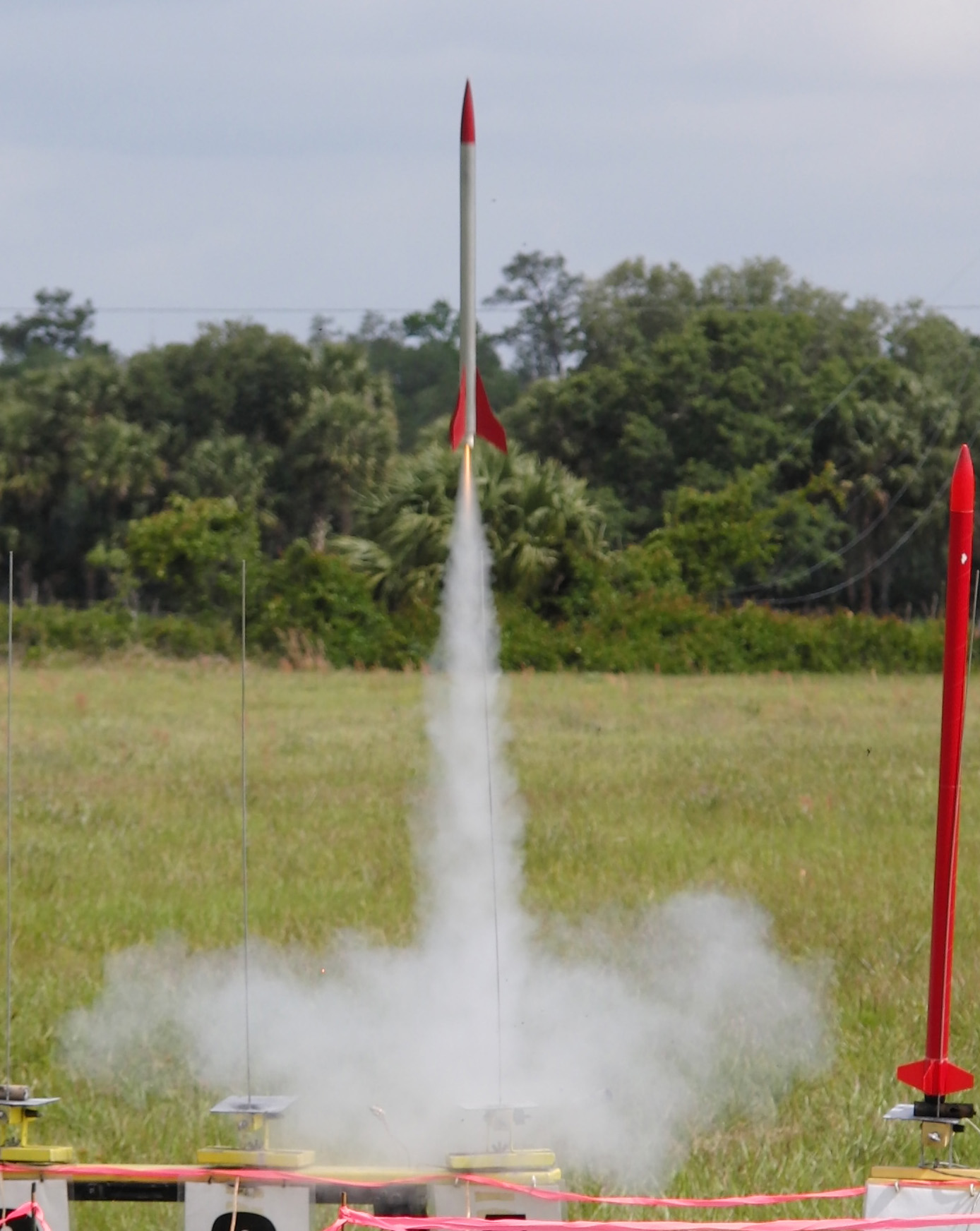Using the Casio EX-F1 to Photograph Rocket LaunchesCasio's new EX-F1 still camera has a number of unique features of interest to rocketry photographers. In addition to being able to take full-resolution (6MP) images at up to 60 frames per second (fps), the camera can take high-speed videos at up to 1200 fps.
The camera looks like a small SLR, but it has an electronic viewfinder and the lens is fixed. It's a little smaller, and much lighter, than my Canon EOS20D digital SLR. The controls are well organized, but the camera is a bit less comfortable in my hands than my SLR. The lighter weight, however, makes it easy to handle. The manual for the camera is supplied as a PDF file on a CD which is disappointing. But, I found that the camera is not too difficult to use. It sometimes takes a little experimentation to find menu options, especially since there are two sets of menus. One menu is accessed, logically, by pressing the "Menu" button. The other menu apprears when you press the "down" button. Sometimes, it's not clear which menu to select. For example, to set the "High-Speed" frame rate, you use the "Menu" button when most settings that affect the current camera mode are accessed by pressing the "down" button. My first experience with the EX-F1 was at the ROCK launch on May 3, 2008. First, I took a couple of snapshots of people setting up the launch pads and attending the flyers meeting.
As a simple point-and-shoot, the EX-F1 takes nice photos and is easy to use. I didn't notice any of the auto-focus problems others have mentioned. I'm not sure if I have the latest firmware or not that is supposed to fix a problem with the autofocus. I did find it difficult to use the electronic viewfinder. It's a little small and dark. The large LCD display is better, but hard to see in the sun. So, I trusted the auto-focus and never tried using manual focus.
Next, I set up the camera on a tripod and used a remote shutter release (which is included with the camera - a nice touch that almost makes up for the missing manual).
The first thing I tried, of course, was using the high-speed 1200 fps mode. Since the image area at 1200 fps is a wide rectangle, I turned the camera sideways to record in portrait mode. I discovered that the remote shutter triggers a still picture, so I used the button on the back of the camera to start the recording. My first high-speed subject was an Estes Eagle boost glider. At ignition, the nozzle of the motor failed resulting in a "roman candle" that set fire to the rocket's tail. It produced a spectacular video.
 Click to View Video
The camera produces
For taking still pictures of the launches, I took advantage of the camera's pre-record feature. In this mode, I was able to wait until the rocket took off to press the shutter release. As soon as I pressed the shutter button all the way, the camera began saving images - including images it took just before I pressed the shutter button. You can select the frame rate - from 1 to 60 frames per second, and how many seconds worth of images to save before the shutter release is pressed.
Using this mode, I can be confident of getting a good shot of every lift-off. Of course, the images aren't quite the same quality I can get with my SLR, but with the EX-F1 I will be able to get decent shots of most every launch.
There are additional modes supported by the camera that I haven't tried yet. For example, it can detect motion and automatically take a series of pictures. Just for fun, I'll try that to see if it can be used to automatically capture a rocket launch.
I also didn't try using the standard video modes. The camera can record standard definition (SD) or high-definition (HD) videos with sound like a camcorder.
At a later launch, I want to experiment with using the pre-record mode to capture launches at 30 fps. I should be able to take the series of images and make a high-resolution video as well as using individual frames as still pictures.
During my first day using the EX-F1, I captured some amazing images. I'm quite happy with the camera and look forward to using it for more than just rocket photos. But, I would not be pleased if it were my only camera.
The EX-F1 won't replace our Olympus Stylus for every-day snapshots because it's too big. And it won't replace my digital SLR for most other uses because it is, ironically, too slow. After taking a high-speed video, or a series of stills, the camera takes a few seconds to save the information to the memory card.
But, the EX-F1 does present exciting opportunities for rocketry photographers. The high-speed videos are dramatic and the pre-record feature makes it easy to capture every launch at up to 60 fps without filling up the memory card with uninteresting photos of the rocket just sitting on the pad.
>>> View more high-speed videos.
Update (September 16, 2008): Casio recently announced a new camera, the EX-FH20, which is a lower-cost alternative to the EX-F1. The EX-FH20 takes 9MP photos at up to 40 frames-per-second and records high-speed video at up to 1000 frames-per-second. It's a little smaller and lighter than the EX-F1. Although the sensor in the FH20 detects more pixels, it is smaller than the sensor in the F1, so noise may be more evident in photographs from the FH20.
Here's a table comparing some of the specifications of the EX-F1 and EX-FH20:
Update (March 8, 2009): Casio has released two new cameras capable of taking stills at up to 30fps and recording high-speed videos. The EXILIM EX-FS10 and EX-FC100 models are small point-and-shoot cameras with some features similar to the more-expensive EX-F1 and EX-FH20 cameras.
[Posted: 2008-05-05 | Updated: 2009-12-22]
|




